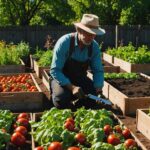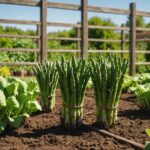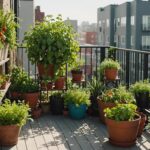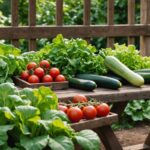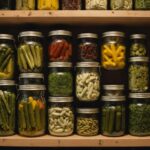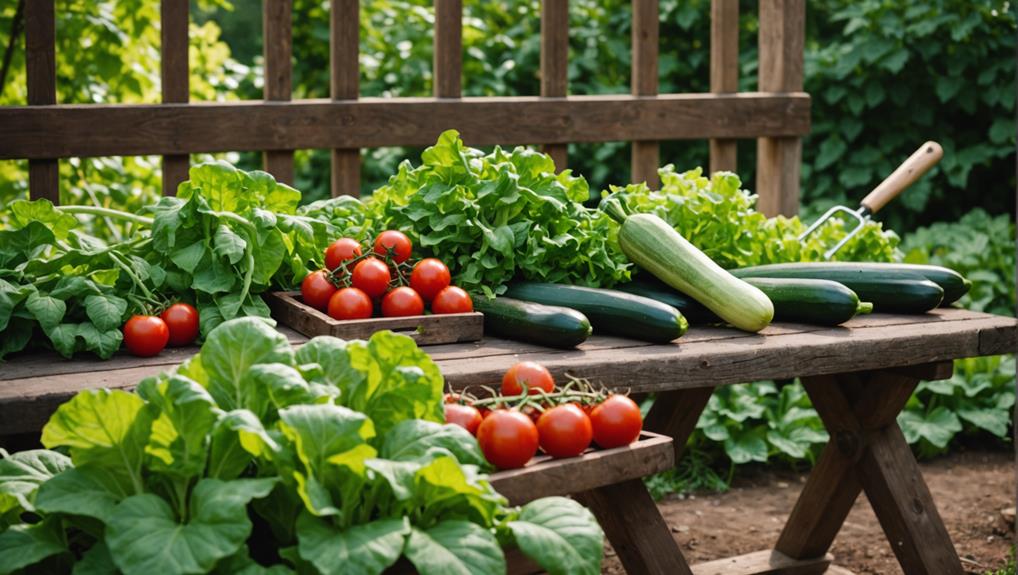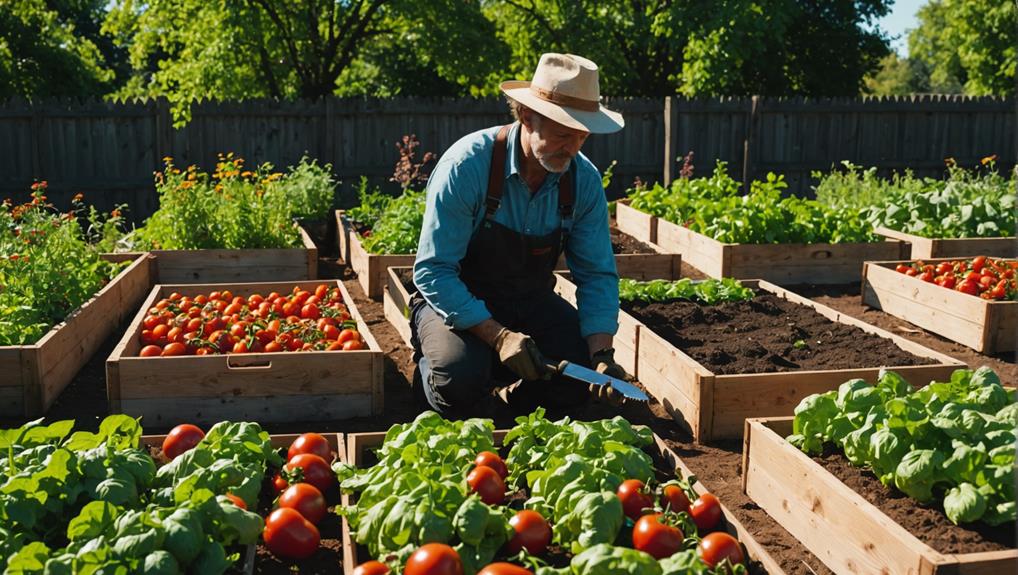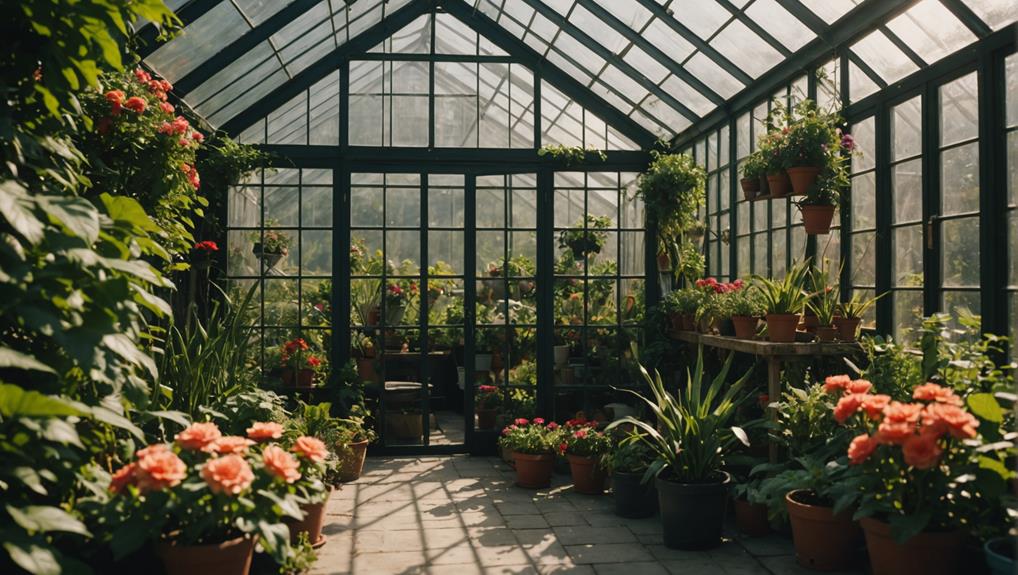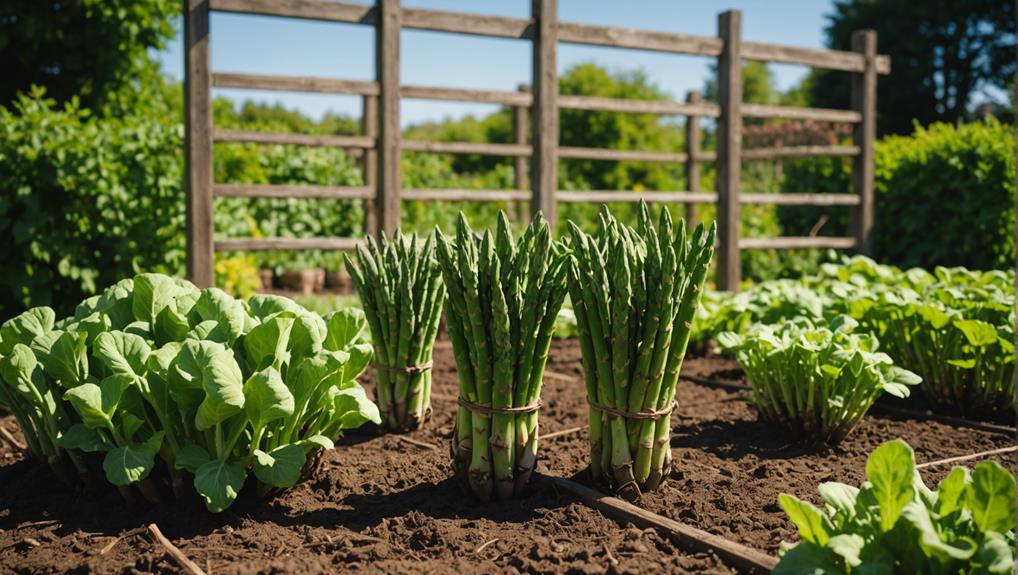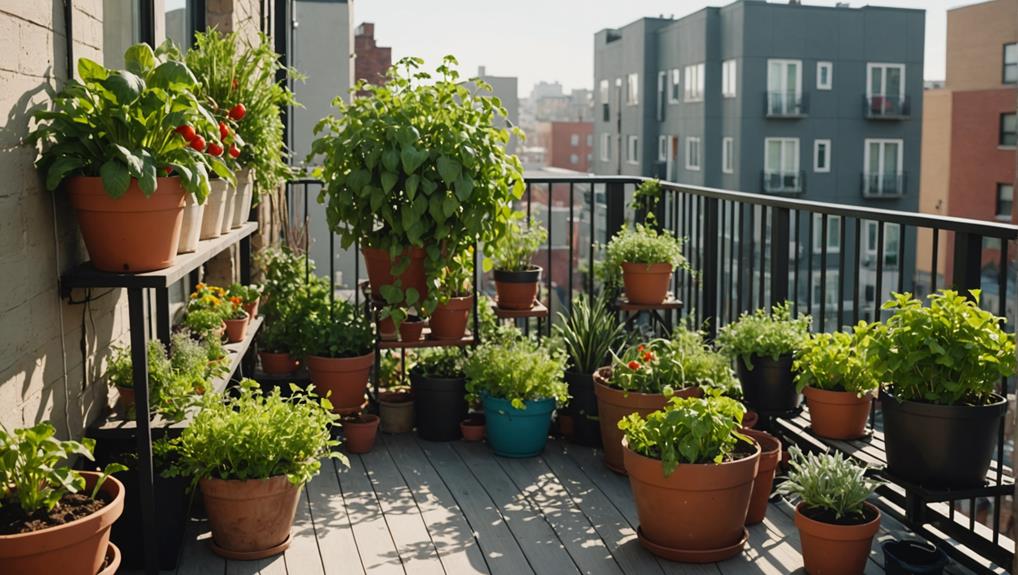As an Amazon Associate I earn from qualifying purchases.
As a prepper, you can cultivate low-maintenance vegetables that thrive with minimal effort and yield impressive rewards. Fast-growing options like radishes can be harvested in just 25-30 days. Consider perennial plants such as asparagus for multiple harvests over the years. Companion planting with marigolds can help deter pests, while crops like garlic enhance flavors and act as a natural repellent. Start small with a raised bed or container to maximize your space and soil quality. With the right techniques and crop choices, you'll be well on your way to a productive garden. There's plenty more to explore to help you succeed!
Understanding Low-Maintenance Vegetables
When you're starting your prepper garden, understanding low-maintenance vegetables like kale and radishes can make your gardening journey easier and more productive. These fast-growing plants thrive in various soil conditions, making them perfect for beginner gardeners who want to cultivate their own food without fuss. Radishes, for instance, can be harvested in just 25-30 days, giving you quick results that boost your confidence.
Consider incorporating perennial vegetables like asparagus and rhubarb into your survival garden. Once planted, they'll provide harvests for multiple years, reducing the need for constant replanting. Plus, many low-maintenance vegetables naturally resist pests; garlic not only deters unwanted visitors but also enhances your meals.
You don't need a vast yard to grow these vegetables. They thrive in raised beds and container gardens, allowing you to maximize limited space while enriching the soil with organic matter. By focusing on low-maintenance options, you can embrace the freedom of self-sustainability, ensuring you have fresh produce available when it counts. Immerse yourself in growing food that supports your prepper lifestyle, and enjoy the ease and rewards of nurturing these resilient plants!
Essential Gardening Techniques
Mastering key gardening techniques not only enhances your ability to grow low-maintenance vegetables but also guarantees a thriving prepper garden year after year. For those diving into vegetable gardening for beginners, understanding plant growth cycles is vital. Choose fast-growing low-maintenance vegetables like radishes, which can be ready to harvest in just 3-4 weeks.
Implementing no-till gardening techniques is a game-changer. By layering organic matter without disturbing the soil, you improve soil health and create an ideal environment for your crops. Raised beds further enhance drainage and reduce weed competition, making it easier to cultivate crops like lettuce and spinach with minimal effort.
Companion planting is another powerful tool. For instance, marigolds can deter pests naturally, eliminating the need for harsh chemicals. Additionally, incorporating mulch around your plants is essential; it retains soil moisture, suppresses weeds, and cuts down on watering frequency.
Soil Preparation and Quality
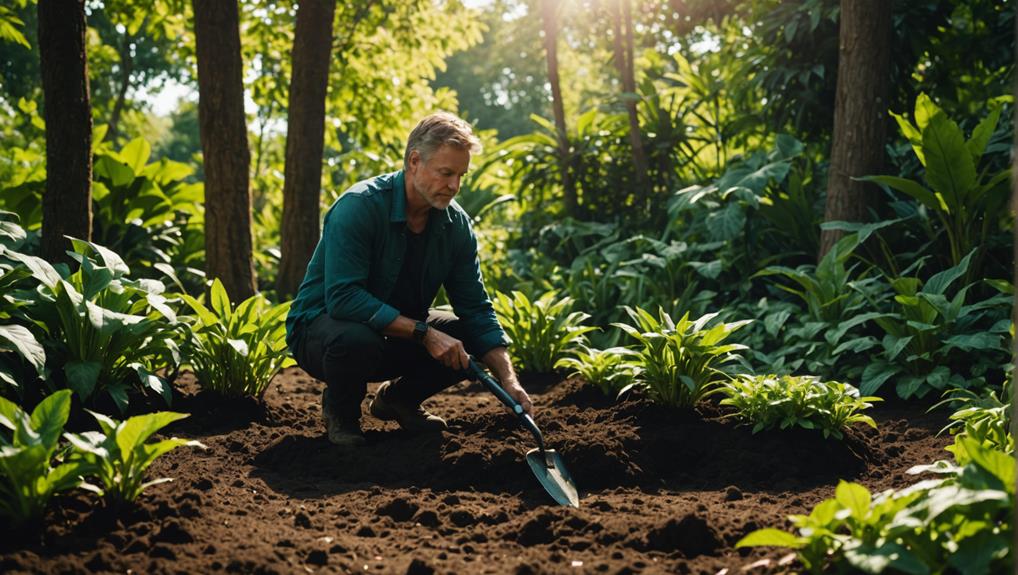
Preparing your soil properly is essential for ensuring a productive and resilient prepper garden. Start by testing your soil's pH and nutrient levels, using home test kits or sending samples to a lab. This will give you a clear understanding of what your soil needs. To enhance soil quality, incorporate organic matter like compost or well-rotted manure. These additions improve nutrient content and promote healthy microbial activity, which is crucial for plant growth.
Aim for well-draining soil, such as sandy loam, which balances nutrient retention and drainage. If you have clay soil, amend it with organic matter to avoid compaction. Mulching is another key technique; using straw or shredded leaves helps with moisture retention, suppresses weeds, and enriches the soil as it decomposes.
Budget-Friendly Gardening Tips
To stretch your gardening budget, focus on starting small with a manageable plot that allows you to grow low-maintenance vegetables. A 10 x 10 feet plot is perfect for beginners. You can prepare your garden using native soil and compost, minimizing costs while enhancing soil quality.
Opt for easy-to-grow crops like zucchini, lettuce, and radishes, which thrive in less-than-ideal conditions and offer quick yields. Plus, consider companion planting to naturally deter pests and improve growth, reducing the need for expensive pest management solutions.
Here's a simple table to help you budget your gardening efforts:
| Expense Category | Cost-Saving Tips | Example Crops |
|---|---|---|
| Soil Preparation | Use native soil and compost | Zucchini, Lettuce |
| Seeds | Buy seed packets or save from harvest | Radishes, Beans |
| Pest Management | Implement companion planting | Basil with Tomatoes |
| Maintenance | Minimal watering and weeding | Carrots, Spinach |
Selecting the Right Crops
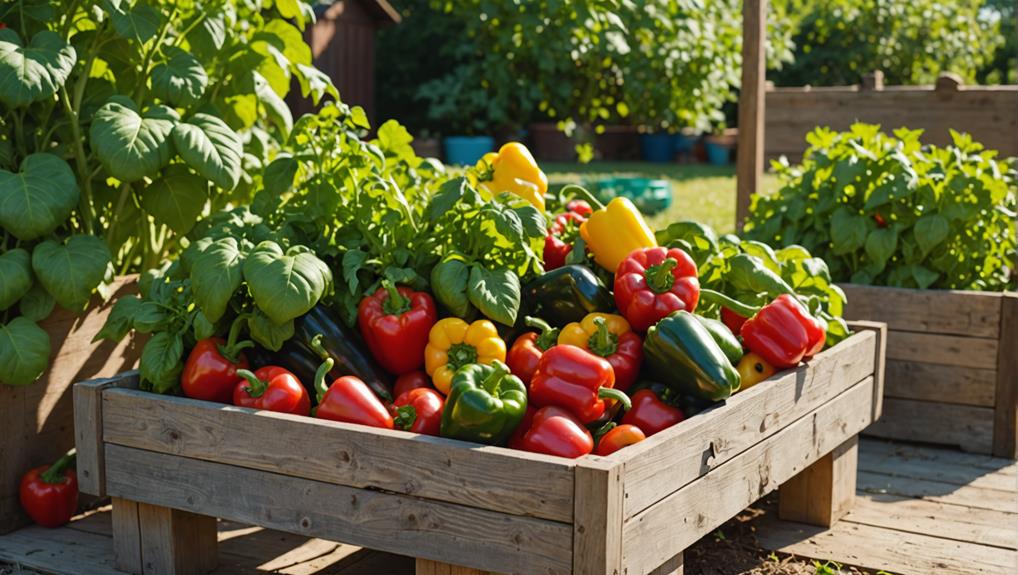
Choosing the right crops for your survival garden is essential for maximizing yields and ensuring a steady food supply. You want to focus on low-maintenance vegetables that thrive in your hardiness zone while providing the nutrition you need. Here are some key points to take into account when selecting your crops:
- Calorie-dense root vegetables like potatoes can yield up to 10 times the weight of the seed planted, making them a smart choice for storage.
- Easy-to-grow veggies such as carrots and onions not only store well but also require minimal maintenance, adapting to various soil conditions.
- Perennial plants like berry bushes and fruit trees offer annual yields with less effort, ensuring long-term food security.
Frequently Asked Questions
What Is the Easiest Vegetable to Grow for Beginners?
Lettuce is one of the easiest vegetables for you to grow. Use easy gardening tips, like soil preparation basics and companion planting benefits, to maximize your yield while keeping maintenance low. Enjoy your fresh harvest!
What Are the Best Vegetables for Prepping?
When prepping, focus on nutrient-dense vegetables like potatoes, onions, and kale. Use heirloom seeds, practice crop rotation, and implement companion planting for pest control. Master storage methods and seasonal planting to guarantee food security and freedom.
What Vegetables Are Low Maintenance to Grow?
If you're looking for low-maintenance vegetables, consider container gardening tips and raised bed advantages. Use organic fertilizer options, seasonal planting guides, and effective watering techniques to guarantee healthy growth without the hassle of constant care.
What Vegetables Are Good for First Time Gardeners?
For first-time gardeners, focus on easy vegetables like lettuce and radishes. Use vegetable selection tips, soil preparation basics, and watering techniques explained to avoid beginner gardening mistakes for a fruitful, liberating experience in your garden.
Conclusion
Ultimately, diving into low-maintenance gardening can be a rewarding experience for preppers like you. By understanding essential techniques and soil quality, you can cultivate a thriving vegetable garden without overwhelming yourself. Remember to choose crops that suit your lifestyle and budget, and you'll reap the benefits with minimal effort. So grab your gardening tools, get started, and enjoy the satisfaction of growing your own food while preparing for the future!
As an Amazon Associate I earn from qualifying purchases.
